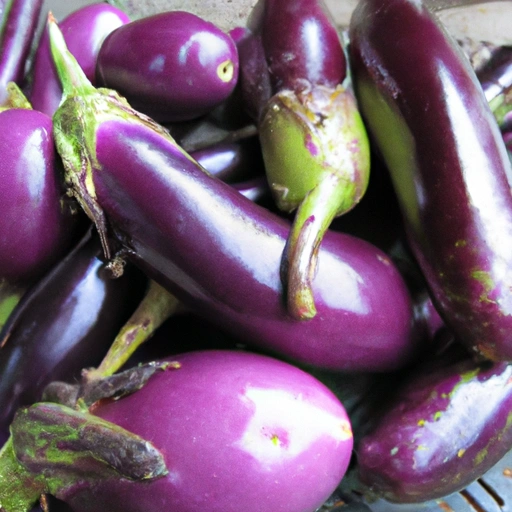Chinese Eggplant
Description

Chinese eggplant, also known as 'aubergine' in European countries or 'brinjal' in South Asian regions, is a long, slender variety of eggplant with a vibrant purple skin. Unlike the more common American globe eggplant, which is larger and rounder, Chinese eggplants are typically thinner and slightly sweeter, with fewer seeds and a more tender texture. Their spongy flesh readily absorbs flavors, making them a favorite in stir-fries, stews, and other dishes.
Common uses
Commonly used in Asian cuisine, Chinese eggplant is a versatile ingredient suitable for multiple cooking techniques such as stir-frying, deep-frying, steaming, grilling, and baking. It's often used in vegetarian dishes as a meat substitute due to its meaty texture.
Nutritional value
Calories
A typical Chinese eggplant weighing around 458 grams (1 lb) contains approximately 100 calories.
Protein
That same serving size contains about 3 grams of protein, making it a low-protein vegetable.
Fat
Chinese eggplant is naturally low in fat, containing less than 1 gram of fat per pound.
Carbohydrates
The carbohydrate content in a pound of Chinese eggplant is about 24 grams.
Vitamins
It is a good source of vitamins, particularly vitamin B1, B6, and vitamin C.
Minerals
Essential minerals found in Chinese eggplant include potassium, magnesium, and manganese.
Health benefits
Chinese eggplant is rich in antioxidants, particularly nasunin found in its purple skin, which may provide neuroprotective benefits. The fiber content aids digestion and can contribute to cardiovascular health. Its low-calorie count also makes it an excellent choice for weight management.
Potential risks
As with most nightshades, Chinese eggplant contains solanine, which in large amounts could cause digestive issues. However, this is typically not a concern when consumed in moderate amounts. Those with allergies to nightshades should avoid it.
Common recipes
Some popular recipes include Chinese eggplant stir-fried with garlic and soy sauce, spicy eggplant with minced pork, and eggplant with miso glaze. It's also a common ingredient in vegetarian dishes like ratatouille and baba ganoush.
Cooking methods
Chinese eggplant can be cooked using a variety of methods such as sautéing, grilling, roasting, or steaming. It is essential to cook it thoroughly to soften the flesh and bring out its flavors.
Pairing with other ingredients
This type of eggplant pairs well with bold flavors like garlic, chili peppers, ginger, and robust herbs such as basil and cilantro. It also complements proteins like tofu, chicken, and pork.
Summary
Chinese eggplant is a versatile and flavorful vegetable that is an essential ingredient in many Asian dishes. With its tender texture and ability to absorb flavors, it offers numerous health benefits and adapts well to various cooking methods and pairings. Whether you're exploring vegetarian cuisine or looking to add variety to your cooking, Chinese eggplant is a nutritious and delicious choice.